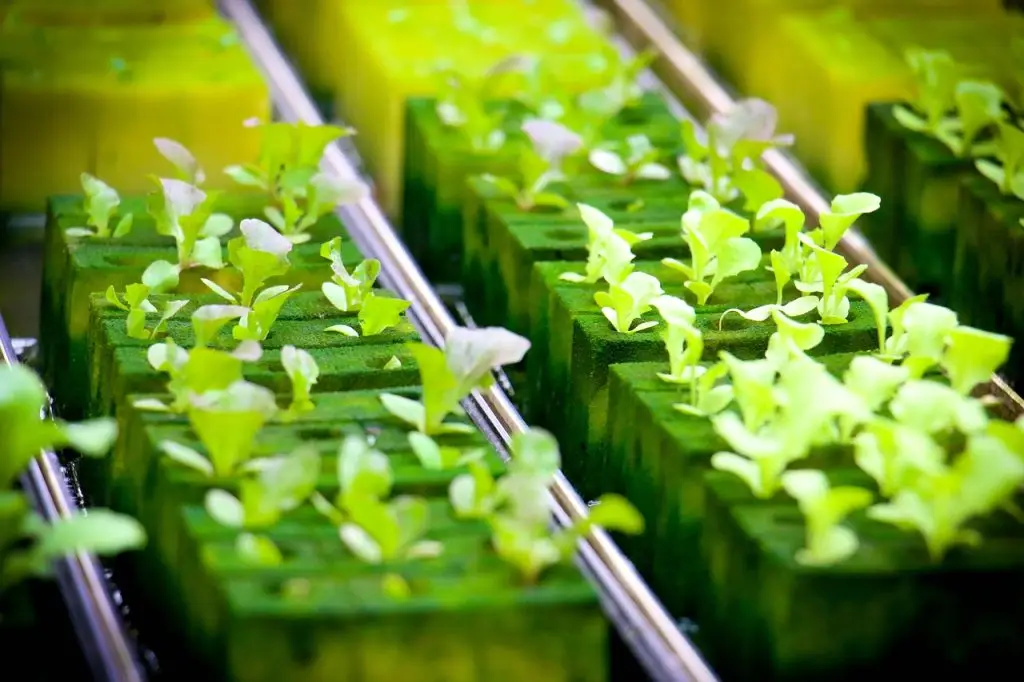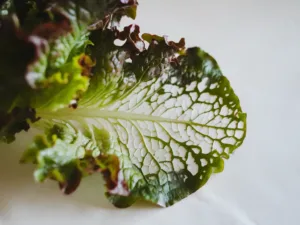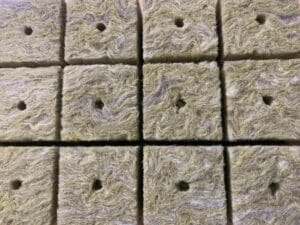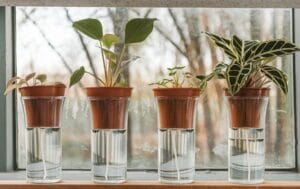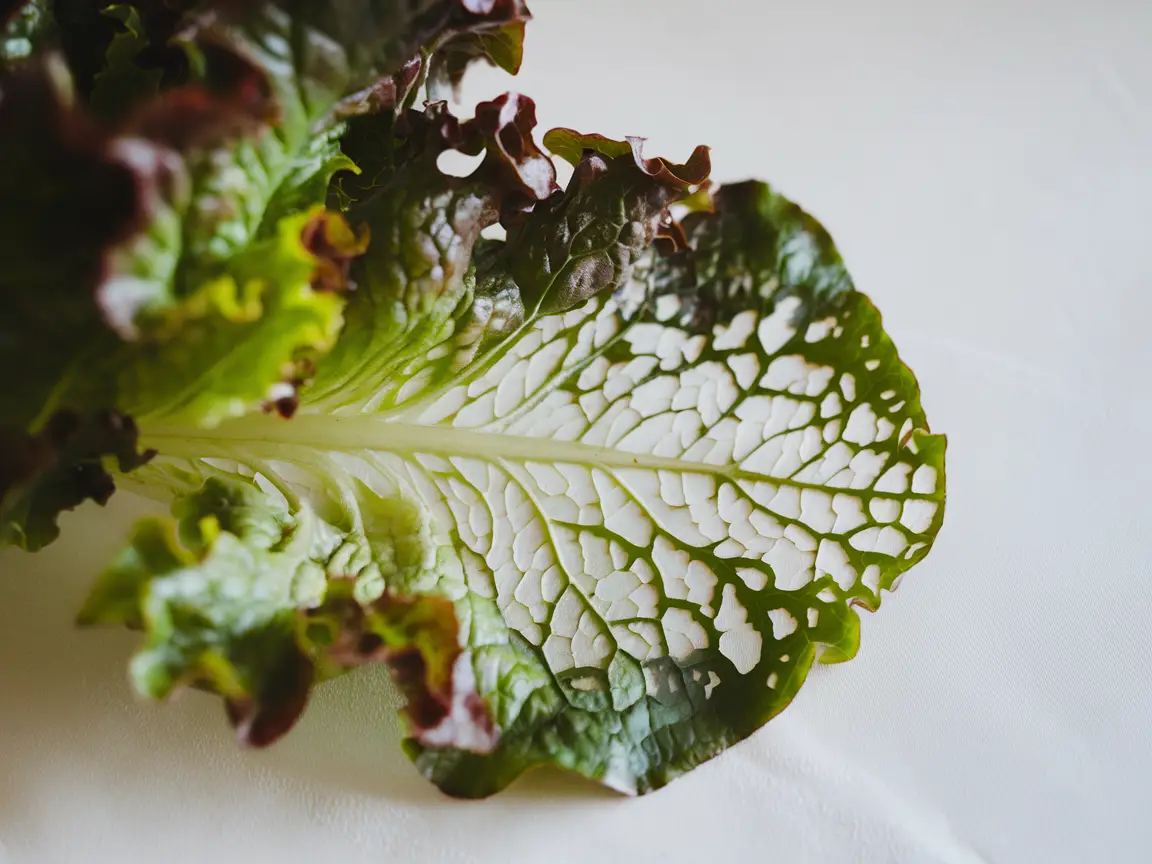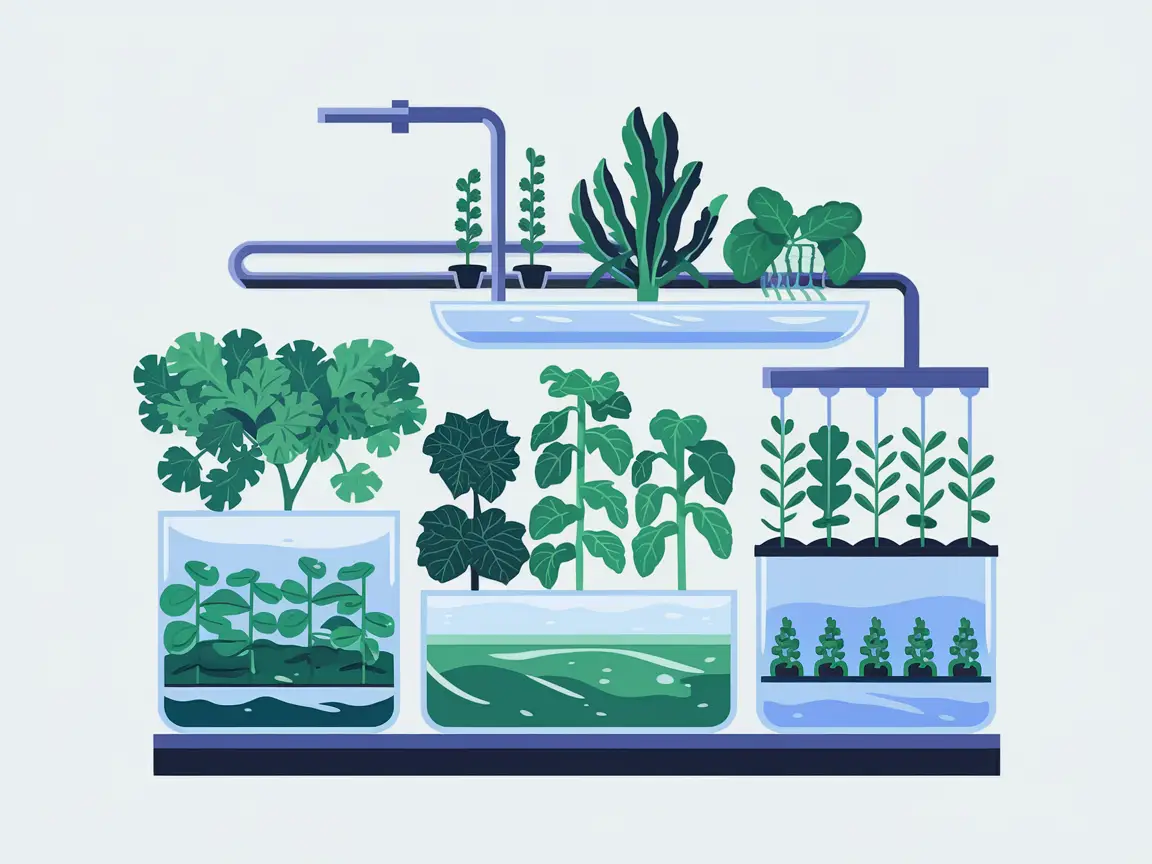What is the Flood and Drain System?
The Flood and Drain System, also known as the ebb and flow system, is a type of hydroponics where plants are periodically flooded with a nutrient solution and then drained. This enables optimal nutrient absorption and root aeration.
Setup
A typical Flood and Drain System consists of a planting container, a reservoir for the nutrient solution, a pump, and an overflow pipe. The pump transports the nutrient solution into the planting container, where it surrounds the plant roots. The solution then flows back into the reservoir.
Variations
There are various ways to operate the Flood and Drain System. Two of the most common are the overflow and the bell siphon.
- Overflow: A simple overflow pipe is installed in the planting container to regulate the maximum water level. Once the pump fills the planting container with nutrient solution, any excess water flows back into the reservoir through the overflow pipe. This prevents overflooding and ensures the plant roots are optimally supplied with nutrients.
- Bell siphon: A bell siphon allows the planting container to be fully flooded and then quickly drained. This promotes improved oxygen supply to the plant roots. The bell siphon consists of an inner pipe and an outer bell. It uses the principles of physics to automatically empty the basin at a certain water level without any electronics.
Tip: For increased protection against overflow, the bell siphon is often combined with an overflow. This enhances the system’s safety.
Advantages
- Relatively affordable: The initial costs are low since only a few technical components are needed.
- Simple functionality: The system is easy to understand and operate, making it ideal for beginners.
- Low maintenance: The system can be operated with minimal care over a long period.
- Suitable for many plants: This system supports a wide range of plants, including herbs, lettuces, and some vegetables.
The Flood and Drain System is perfect for beginners because it requires little effort and delivers high yields.
Disadvantages
- Dependent on power: A power outage can disrupt nutrient supply.
- Risk of flooding: Incorrect pump settings can lead to waterlogging.
- Salt deposits in the substrate: These can lead to pH fluctuations and impair the plants’ nutrient absorption.
Despite some drawbacks, the Flood and Drain System offers a solid foundation for hydroponic growing projects and is especially popular in professional nurseries.
Building a Flood and Drain System
Required Materials
- Planting container
- Reservoir
- Net pots (optional)
- Substrate
- Pump
- Overflow pipe or bell siphon
- Timer
Planting Container The planting container is the heart of your system. It should be large enough to hold multiple plants and the substrate. Plastic containers are a common choice as they are lightweight, durable, and easy to clean.
Reservoir The reservoir holds the nutrient solution that provides all essential nutrients to your plants. It should be made of opaque material to prevent algae growth.
Net Pots (optional)
These pots securely hold the plants and allow roots to grow into the nutrient solution. Available in different sizes, they adapt to the needs of your plants. In the Flood and Drain System, they help separate plants but are not strictly necessary.
To stabilize the plants, a substrate is needed. Popular materials include expanded clay, rockwool, perlite, and coconut coir. In the Flood and Drain System, the substrate can either be used in net pots or directly in the flood tray. These provide good stability and aeration for the roots.
Pump
The pump transports the nutrient solution from the reservoir to the planting container. A reliable pump is essential for the smooth operation of your system.
Overflow Pipe or Bell Siphon
These components control the water level in the planting container. An overflow pipe is simple and low maintenance, while a bell siphon allows more precise control over water levels and better oxygenation.
Timer
The timer controls the pump cycles, ensuring that the plants are regularly flooded and drained. This ensures that the roots are always optimally supplied with nutrients and oxygen.
Each of these materials plays an important role. The planting container holds the plants, while the pump and overflow pipe regulate nutrient supply, and the timer manages the flood and drain cycle.
Common Problems and Solutions
Salt Deposits in the Substrate
Salt deposits can accumulate in the substrate and cause pH fluctuations, which impair the plants’ nutrient absorption. This can lead to growth issues and nutrient deficiencies.
Flush the substrate with clear water every 6-12 months to remove excess salts. Using net pots can also help minimize this problem.
Flooding
Incorrect pump settings can lead to flooding, causing waterlogging and root rot.
Make sure the pump is set correctly and that the overflow or bell siphon is functioning properly. Regularly check the pump cycles and adjust them according to your plants’ needs.
With a little attention, most issues in the Flood and Drain System can be easily resolved.
Frequently Asked Questions
1. How often should I flood the Flood and Drain System?
Good question! It depends on your plants and environmental conditions. Most gardeners flood the system 3-4 times daily. In warmer areas or with particularly thirsty plants, it may be more frequent. Observe your plants closely and adjust the cycles to ensure they always receive enough nutrients.
2. Which plants are best suited for the Flood and Drain System?
The Flood and Drain System is ideal for herbs like basil and cilantro as well as lettuces and fast-growing vegetables like spinach and arugula. Tomatoes and bell peppers also thrive well. However, plants with large root systems or specific water needs may not respond well to the fluctuating water levels.
3. How can I prevent salt deposits in the substrate?
Salt deposits can be bothersome. Regularly rinse the substrate with clear water to remove excess salts. It’s also important to frequently replace the nutrient solution and monitor the pH levels. This ensures plants can absorb all nutrients well and prevents harmful deposits.
4. What should I do if my plants show unhealthy growth?
If your plants develop yellow leaves or fail to grow properly, it may indicate nutrient deficiencies.
Test the nutrient solution and add more if necessary. It’s often a good idea to completely replace the solution and clean the container. This ensures your plants receive everything they need.
6. What happens to my Flood and Drain System during a power outage?
A power outage can be problematic because the pump fails and plants stop receiving nutrients. A backup power supply can be very helpful here. Alternatively, you can keep a manual pump on hand to circulate the nutrient solution manually if needed.
One advantage of the Flood and Drain System is its resilience compared to other systems. You can set it up to always leave a bit of water in the planting container to ensure a continuous supply.
Still, regularly check the pump and other essential components to ensure they’re always ready for use.
The Flood and Drain System is an excellent choice for anyone looking to enter the world of hydroponics. It is easy to use, cost-effective

